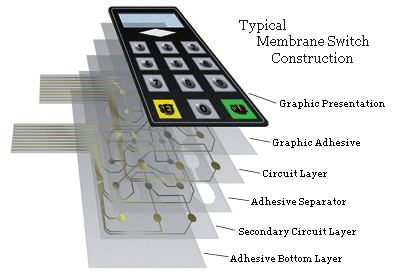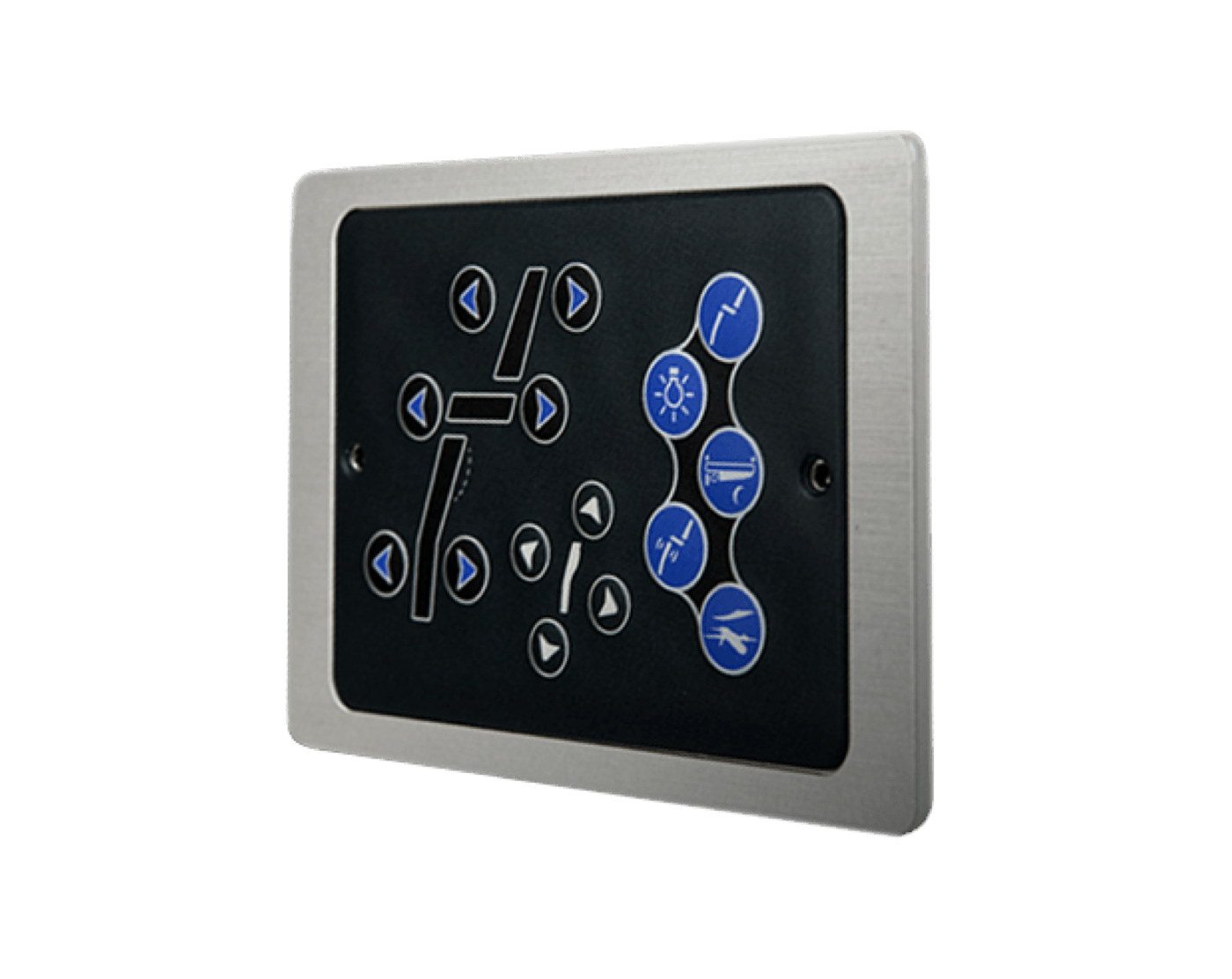All About Membrane Layer Change: Comprehending Its Layout and Performance
When you think of the control interfaces in contemporary gadgets, membrane buttons frequently come to mind. These components are greater than simply switches; they mix design and performance effortlessly. Recognizing exactly how they work and what makes them efficient can alter your viewpoint on everyday electronics. There are subtleties to their design and efficiency that you might not be conscious of. Let's explore what sets membrane layer switches besides other control systems.
What Are Membrane Buttons?

Their seamless nature makes them simple to clean and resistant to dirt and wetness, an important function in several environments. Membrane switches can also be personalized regarding shape, dimension, and graphics, permitting manufacturers to develop unique interfaces customized to details items. Plus, they're lightweight and thin, which helps in minimizing the overall mass of tools. On the whole, membrane layer switches play a considerable role in improving user experience across a large selection of applications.
Exactly How Membrane Layer Switches Over Job
When you push a key on a membrane layer switch, it triggers an uncomplicated yet effective device. membrane switch manufacturer. The top layer, usually made of versatile material, presses down onto a conductive layer below it.
You'll see that the tactile comments differs based on the button design, using either a soft click or an extra noticable reaction. As soon as you release the secret, the membrane layer go back to its original placement, reopening the circuit and stopping the signal. This process happens almost instantly, guaranteeing a receptive user experience.
Membrane layer buttons are popular because of their durability and resistance to dust and dampness, making them perfect for different applications, from house devices to medical gadgets. Recognizing this procedure helps you appreciate their prevalent use.
Key Parts of Membrane Switches
Comprehending the essential elements of membrane switches is essential for comprehending their capability and design. At the core, you'll find the graphic overlay, which provides the aesthetic user interface for customers. Below that, there's a spacer layer that divides the circuit layers, making certain that they do not make call until pressed. The circuit layer is where the magic happens; it is composed of conductive traces that finish the circuit when you push the switch. One more essential component is the glue support, permitting the button to comply with surface areas firmly. The safety layer shields versus ecological aspects and use, extending the switch's life expectancy. Each element plays a considerable role in ensuring trustworthy efficiency and individual interaction. By understanding these parts, you'll gain understanding into just how membrane layer switches run and their significance in different applications.
Materials Utilized in Membrane Change Design
The efficiency and durability of membrane switches over heavily rely on the products utilized in their style. You commonly experience polyester and polycarbonate as primary substratums due to their excellent toughness and adaptability. These materials resist scratches and chemicals, making them ideal for requiring atmospheres.
The conductive layers usually utilize silver or carbon, selected for their reliability and conductivity. membrane switch manufacturer. Silver supplies superior performance, while carbon is an affordable option. For the overlay, you may think about a matte or shiny coating, depending on your aesthetic requirements and user experience
Adhesives play a crucial role as well; they bond layers safely and assure longevity. Ensure to choose adhesives that hold up against environmental factors like temperature level and moisture. Lastly, do not forget the importance of an excellent printing method for graphics, as it enhances both performance and aesthetic allure. Choosing the right products will guarantee your membrane switch stands the test of time.
Style Considerations for Membrane Layer Switches
While developing membrane buttons, it's essential to take into consideration different elements that influence their functionality and customer experience. Begin by focusing on the layout and switch dimension; make sure they're intuitive and simple to navigate. Consider the responsive comments you want to provide-- will individuals need a visible click or a softer touch? In addition, think regarding the products you'll utilize, as they'll influence durability and aesthetic appeals.
Don't forget the graphic style; clear labeling and shade contrast are substantial for visibility. Confirm your style accommodates ecological factors, like moisture or temperature variations, which might impact efficiency. Ultimately, bear in mind the significance of screening prototypes with real customers to collect comments and make needed changes. This repetitive procedure aids you refine the layout, validating it satisfies both practical and aesthetic demands effectively. By thoroughly thinking about these elements, you'll create a membrane button that improves usability and contentment.
Applications of Membrane Switches
Membrane buttons are versatile parts found in numerous applications, from commercial devices to customer electronic devices. You'll see their influence in makers that need resilient interfaces and in devices that profit from smooth layouts. Comprehending these applications helps you appreciate the functionality and usefulness of membrane buttons in day-to-day technology.
Industrial Tools Usage
When you're wanting to improve the functionality of commercial devices, membrane buttons use a dependable remedy that integrates sturdiness with user-friendly style. These switches are excellent for severe environments, giving resistance to dirt, moisture, and chemicals. You'll locate them in control panels for producing machines, cooling and heating systems, and medical tools, where precision and responsiveness are essential. Their low account implies they fit flawlessly into different tools, saving valuable area while maintaining simplicity of usage. With customizable graphics and backlighting choices, you can produce an instinctive interface for drivers, improving efficiency and security. And also, their long life expectancy lowers maintenance prices, making them a smart financial investment for your commercial applications. Embrace membrane buttons to simplify your operations and enhance total performance.
Customer Electronics Integration
In the domain of customer electronic devices, membrane buttons play a crucial function in boosting individual interaction and tool performance. Membrane switches my company also assure longevity and resistance to dirt and moisture, expanding the lifespan of your electronic devices. By selecting membrane layer switches, you boost not just the capability however additionally the design of your devices, making day-to-day communications smooth and delightful.
Advantages and Negative Aspects of Membrane Buttons
While membrane switches provide a series of advantages, they also feature some disadvantages that you ought to take into consideration. One considerable benefit is their compact style, making them optimal for space-constrained applications. They're also cost-efficient, giving a resilient remedy with a low manufacturing cost. Additionally, their smooth surface is simple to tidy, enhancing hygiene in settings like medical facilities.

Membrane switches can have a shorter life-span contrasted to mechanical switches, particularly under heavy usage. They can additionally be much less tactile, which might influence customer comments throughout operation. Balancing these pros and disadvantages will certainly help you determine if membrane layer switches are the appropriate fit for your job.
Often Asked Inquiries
For How Long Do Membrane Layer Changes Usually Last?
Membrane switches over usually last in between 5 to 10 years, depending upon use and ecological conditions. You'll desire to evaluate factors like wear, direct exposure to moisture, and click for more temperature level fluctuations to assess their durability effectively.
Can Membrane Layer Switches Be Custom-made for Specific Styles?
Yes, you can tailor membrane buttons to fit specific styles (membrane switch manufacturer). You'll have the liberty to choose shades, forms, and designs that match your job's requirements, ensuring they blend seamlessly with your general visual
What Is the Cost Variety for Membrane Layer Change Manufacturing?
The cost variety for membrane layer button production typically drops between $1 and $10 each, depending on elements like layout complexity, quantity, and materials. You can obtain quotes from suppliers to find the most effective alternative.

Are Membrane Changes Water Resistant or Immune?
Membrane layer buttons can be designed to be waterproof or resistant, relying on materials used and building techniques. If you require them for damp settings, ensure you specify those needs throughout the style process.
How Do Membrane Layer Switches Over Contrast to Typical Buttons?
Membrane layer buttons are usually thinner and more flexible click here now than traditional buttons, offering a sleek layout. They're frequently simpler to clean and incorporate, yet could not give the responsive comments you're utilized to with mechanical choices.
Conclusion

Comments on “Many industries depend on a skilled membrane switch manufacturer for long-lasting solutions.”